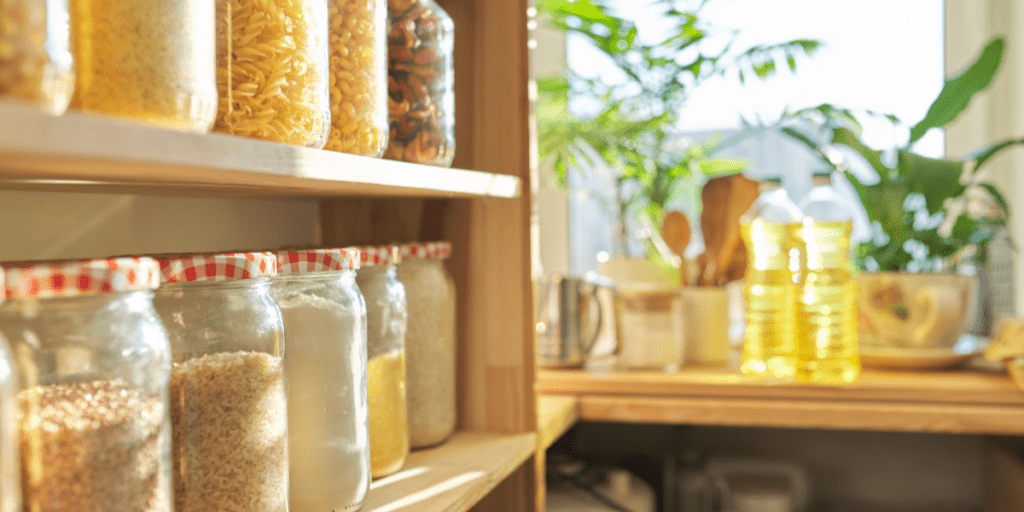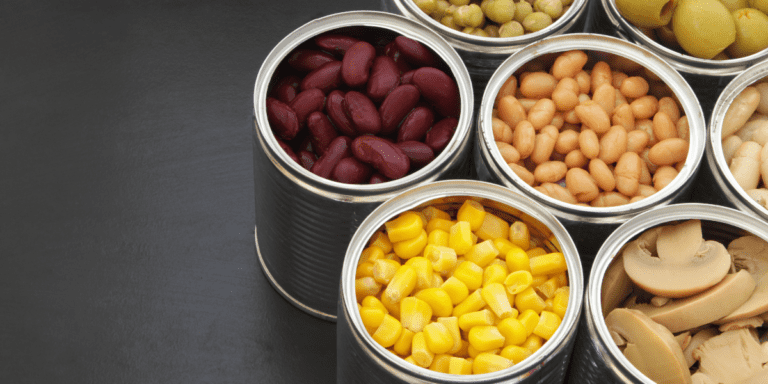non perishable foods to stock up on for emergencies
In an emergency situation, access to food can be disrupted or cut off completely. That’s why it’s important to have a stockpile of non-perishable foods on hand, so you can ensure that you and your family have access to nourishment no matter what comes your way.
Non-perishable foods are those that don’t require refrigeration or cooking and have a long shelf life, making them ideal for storing in case of an emergency.

But with so many options out there, it can be tough to know which non-perishable foods are the best to stock up on. That’s where this post comes in.
We’ll go over some of the best non-perishable foods to have on hand in case of an emergency, as well as some tips for storing and rotating your supplies to ensure that they stay fresh and edible for as long as possible.
By the end of this post, you’ll have a good idea of what non-perishable foods to keep in your emergency stockpile, so you can be prepared for whatever comes your way.
List of non-perishable foods:
When it comes to non-perishable foods to stock up on for emergencies, there are many options to choose from. Some good options include:
Canned goods:
Canned goods, such as vegetables, fruits, beans, and meats, are a great option for your emergency stockpile. Just be sure to check the expiration dates and rotate your supplies regularly to ensure that they don’t expire.

- Vegetables: Canned vegetables, such as tomatoes, green beans, corn, and peas, can be a convenient and nutritious addition to your emergency stockpile. These canned goods can be used in a variety of dishes, from soups and stews to pasta and rice dishes.
- Fruits: Canned fruits, such as peaches, pears, pineapples, and applesauce, can provide a burst of sweetness and nourishment in an emergency situation. They can be eaten as is or used to add flavor and nutrition to oatmeal, yogurt, or other dishes.
- Beans: Canned beans, such as kidney beans, black beans, and chickpeas, are a good source of protein and fiber. They can be used in a variety of dishes, from soups and stews to salads and dips.
- Meats: Canned meats, such as tuna, chicken, and beef, can provide a source of protein in an emergency situation. Just be sure to check the expiration dates and rotate your supplies regularly to ensure that they don’t expire.
Dried grains:
Dried grains, such as rice, quinoa, and oats, are another good option for your emergency stockpile. They have a long shelf life and are easy to prepare, making them a convenient and nourishing choice.

- Rice: Rice is a staple food in many parts of the world, and it’s a good choice for your emergency stockpile. It has a long shelf life and is easy to prepare, making it a convenient and nourishing choice.
- Quinoa: Quinoa is a high-protein grain that’s packed with nutrients. It’s a good choice for your emergency stockpile, as it has a long shelf life and is easy to prepare.
- Oats: Oats are a good source of fiber and nutrients, and they have a long shelf life. They can be eaten as hot cereal, used to make oatmeal cookies or granola bars, or used as a topping for yogurt or fruit.
Nuts and seeds:
Nuts and seeds, such as almonds, peanuts, sunflower seeds, and pumpkin seeds, are good sources of protein and healthy fats. They have a long shelf life and can be a tasty addition to your emergency stockpile.

- Almonds: Almonds are a good source of protein, fiber, and healthy fats. They have a long shelf life and can be eaten as a snack, used as a topping for salads or yogurt, or ground up and used in baking.
- Peanuts: Peanuts are another good source of protein, fiber, and healthy fats. They have a long shelf life and can be eaten as a snack, used in peanut butter, or added to savory dishes like stir-fries.
- Sunflower seeds: Sunflower seeds are a good source of protein, fiber, and healthy fats. They have a long shelf life and can be eaten as a snack, used as a topping for salads or yogurt, or ground up and used in baking.
- Pumpkin seeds: Pumpkin seeds are a good source of protein, fiber, and healthy fats. They have a long shelf life and can be eaten as a snack, used as a topping for salads or yogurt, or ground up and used in baking.
Other preserved foods:
Other preserved foods, such as jerky, dried fruit, and freeze-dried meals, are also good options for your emergency stockpile. Just be sure to check the expiration dates and rotate your supplies regularly to ensure that they don’t expire.

- Jerky: Jerky is a type of preserved meat that has a long shelf life and can be a convenient source of protein in an emergency situation.
- Dried fruit: Dried fruit, such as apricots, apples, and cranberries, can provide a burst of sweetness and nutrients in an emergency situation. Just be sure to check the expiration dates and rotate your supplies regularly to ensure that they don’t expire.
- Freeze-dried meals: Freeze-dried meals are a convenient option for your emergency stockpile, as they are easy to prepare and don’t require refrigeration. They can provide a range of nutrients and flavors, making them a good choice for your emergency stockpile.
By including a variety of non-perishable foods in your emergency stockpile, you can ensure that you and your family have access to a range of nourishing options no matter what comes your way.
Tips for storing non-perishable foods:
In addition to selecting the right non-perishable foods for your emergency stockpile, it’s also important to store them correctly to ensure that they stay fresh and edible for as long as possible. Here are a few tips for storing non-perishable foods:

- Choose the right storage location: Non-perishable foods should be stored in a cool, dry place, such as a pantry or basement. Avoid storing them in damp or humid areas, as this can cause the food to spoil or become contaminated.
- Use airtight containers: To prevent pests and bacteria from getting into your non-perishable foods, be sure to store them in airtight containers. This can help keep the food fresh and prevent it from getting damaged.
- Rotate your supplies: Non-perishable foods have a limited shelf life, even if they don’t need to be refrigerated. Be sure to check the expiration dates on your supplies regularly and rotate them out as needed to ensure that you’re always using the freshest products.
- Pack your supplies for easy access: In case of an emergency, you’ll want to be able to access your non-perishable foods quickly and easily. Consider packing your supplies in a designated emergency kit or bag, so you can grab it and go if you need to evacuate or shelter in place.
By following these tips, you can help ensure that your non-perishable foods stay fresh and edible for as long as possible, so you’ll be prepared for whatever comes your way.
Conclusion
In conclusion, it’s important to have a stockpile of non-perishable foods on hand in case of emergencies. By choosing a variety of non-perishable foods, such as canned goods, dried grains, nuts and seeds, and other preserved foods, and storing them properly, you can ensure that you and your family have access to nourishment no matter what comes your way.
Don’t wait until an emergency strikes to build up your emergency food supply. Start stocking up on non-perishable foods today, so you’ll be prepared for whatever comes your way. Your peace of mind will be worth it.
Bonus tip
Want to learn more about creating an emergency food supply kit? Check out our comprehensive guide, which covers everything you need to know about building up a stockpile of non-perishable foods and other supplies.
In this guide, you’ll find:
- A detailed list of non-perishable foods to stock up on
- Tips for storing and rotating your supplies
- Ideas for creating an emergency food supply kit that’s easy to grab and go
- And much more
Don’t wait until an emergency strikes to start preparing. Click the link below to access our emergency food supply guide and get started today.
Don’t forget to stay connected with us on Facebook, Twitter, Pinterest, and Instagram!
Subscribe to our newsletter
Our blog is updated daily with the latest in survival news and information.




